 |
 |
 |
| |
Two Thirds in South Carolina With New HIV Missed Chance to Use PrEP - "Missed Opportunities to Initiate HIV Pre-exposure Prophylaxis in South Carolina - 2013-2016"....women, Blacks, young, MSM
|
| |
| |
IDWeek2017/IDSA, October 4-8, 2017, San Diego
Mark Mascolini
Among 885 people diagnosed with recent HIV infection in South Carolina in 2013-2016, two thirds had a recent health care visit during which they could have learned about and started preexposure prophylaxis (PrEP) [1]. Women, blacks, and younger people were more likely to have these healthcare encounters without starting PrEP. Results also suggested hospital emergency departments may be underused venues for PrEP education.

Several trials show that PrEP with daily or as-needed tenofovir/emtricitabine can prevent HIV infection in high-risk men and women, including people who inject drugs. The Centers for Disease Control and Prevention (CDC) estimates that 1.2 million people in the United States fall into specified high-risk groups. Yet PrEP use remains low in many parts of the country, partly because of cost and the need to make a healthcare visit and get tested for HIV.
University of South Carolina researchers conducted this study to estimate how many people diagnosed with recent HIV infection in the state had visited a health care facility when still uninfected and probably missed an opportunity to start PrEP. They focused on people newly diagnosed with HIV between January 2013 and December 2016, after the FDA approved tenofovir/emtricitabine PrEP. They included only people with an initial CD4 count at or above 500 and at least 13 years old.
To find out which of these people had a healthcare visit from 2011 until their HIV diagnosis date, the researchers used a unique person identifier to match individuals identified in the South Carolina enhanced HIV/AIDS Reporting System and a statewide all-payer healthcare facility database. From these sources they captured demographic data, HIV risk factors, healthcare visit setting, insurance status, and other variables.
The analysis focused on 885 people newly diagnosed with HIV at a CD4 count of 500 or higher. Three quarters of this group (77%) were male, 66% black, 25% white, 47% younger than 30, 58% men who have sex with men, and 25% rural residents. Among these 885 newly diagnosed people, 582 (66%) visited a healthcare facility at least once before their HIV diagnosis, making a median of four visits. The researchers proposed that these people missed a chance to learn about and start PrEP.
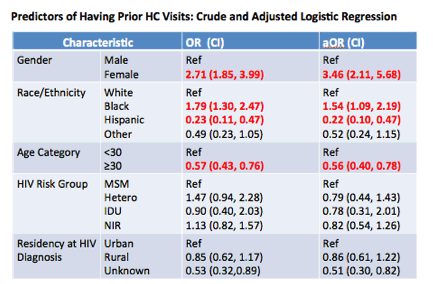
Most of these healthcare visits were made to an emergency room (84.3%), while fewer were outpatient visits (9.8%) or inpatient stays (5.9%). Accordingly, three quarters of visits (77%) involved an emergency or trauma, while 9.4% were categorized as urgent, 8.9% as elective, and the rest for unknown reasons. Insurance covered about half of visits (54.2%), whether via Medicaid/Medicare (32.9%) or commercial insurance (21.3%). The other visits were listed as self-pay or indigent/charitable pay.
The 582 people who had a pre-HIV healthcare visit differed most from those who did not in proportion of women (81.1% versus 18.9%), blacks (72.5% versus 27.5%), Hispanics (25% versus 75%), and age younger than 30 (72.4% versus 27.6%) (P < 0.0001 for all comparisons).
Multivariate analysis determined that two factors independently raised chances of making a healthcare visit before HIV diagnosis, female sex (adjusted odds ratio [aOR] 3.46, 95% confidence interval [CI] 2.11 to 5.68) and black versus white race (aOR 1.54, 95% CI 1.09 to 2.19). Being Hispanic rather than white lowered chances of making a pre-HIV visit (aOR 0.22, 95% CI 0.10 to 0.47), as did age 30 or older versus younger (aOR 0.56, 95% CI 0.40 to 0.78).
Because of the high rate of emergency room visits in the time before an HIV diagnosis, the researchers suggested that future PrEP initiatives should consider focusing more on ERs.
Reference
1. Okoye S, Chang MH, Weissman S, et al. Missed opportunities to initiate pre-exposure prophylaxis in South Carolina--2013-2016. IDWeek2017/IDSA. October 4-8, 2017. San Diego. Abstract 884.
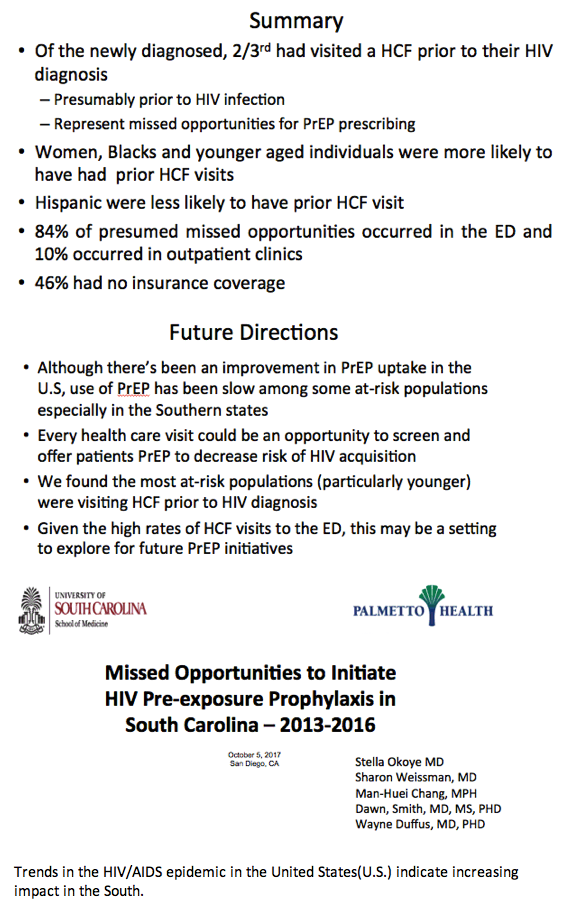
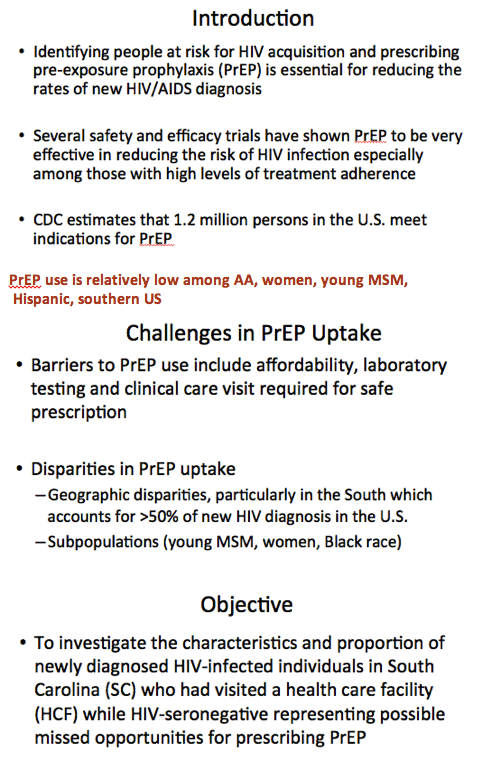
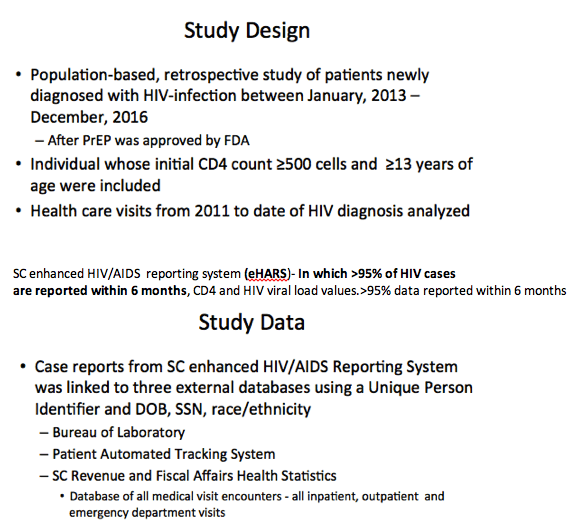
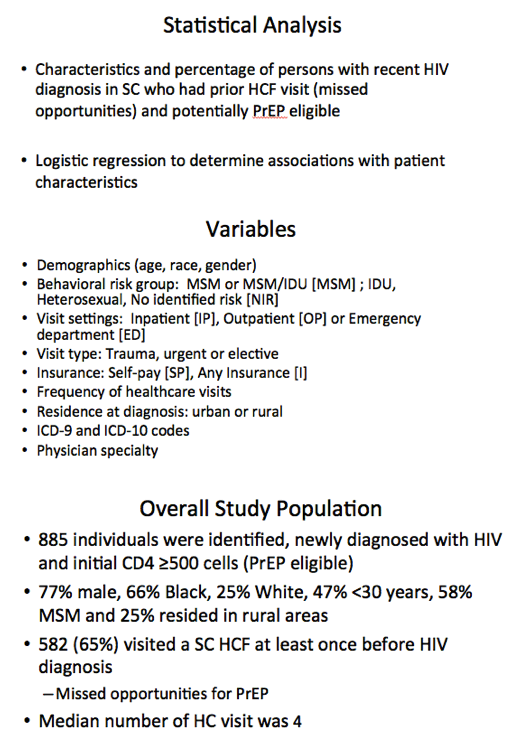
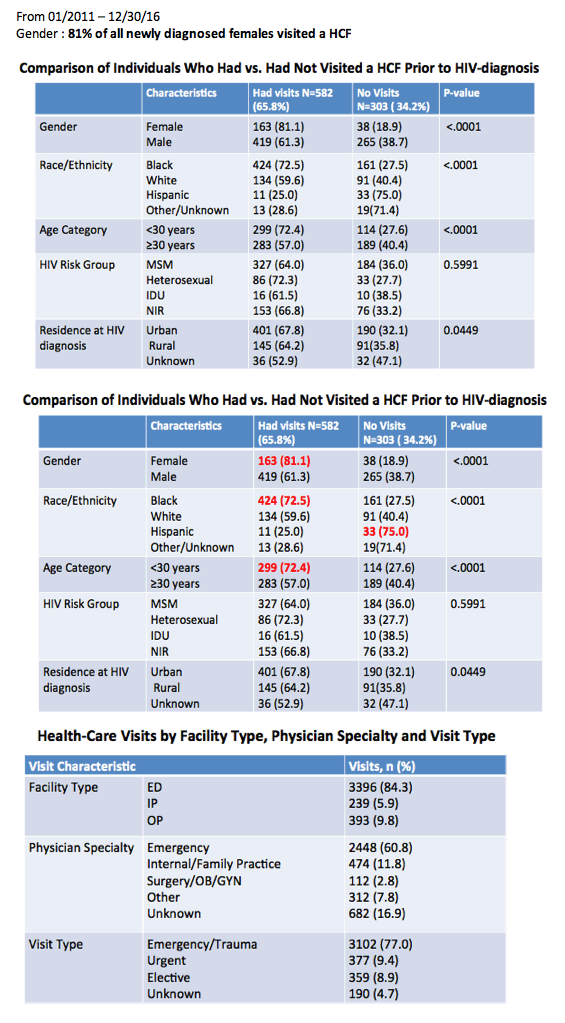
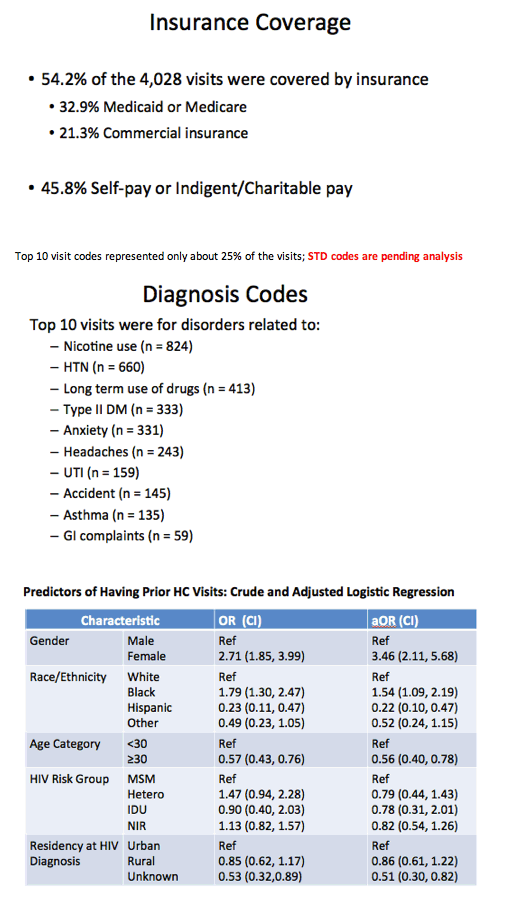
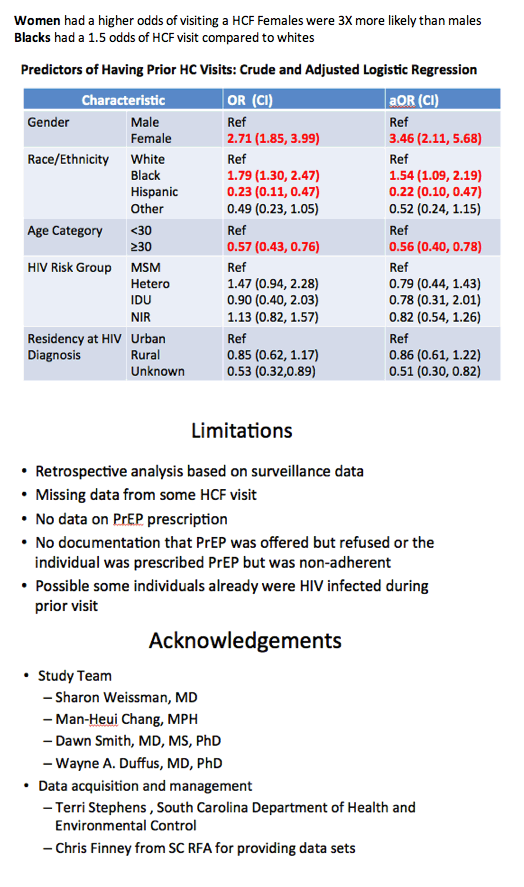
|
| |
|
 |
 |
|
|